When it comes to gardening, deer can be one of our biggest challenges. These graceful yet persistent creatures often find themselves drawn to our favorite plants, resulting in the heartache of lost blooms and foliage. Luckily, there’s a silver lining: deer resistant flowering shrubs, which we’ll explore below.
Abelia (Abelia spp.)
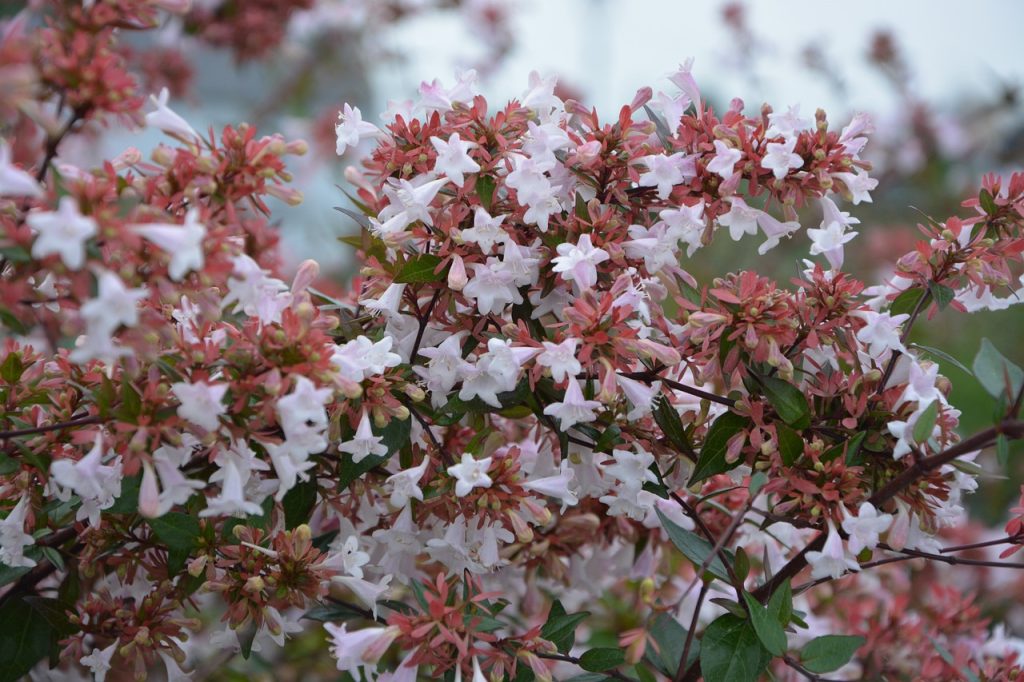
Abelia is a fantastic choice for gardens looking to combine beauty with resilience. These evergreen shrubs are prized for their prolonged blooming period, which can last from spring until frost. The bell-shaped flowers, typically in hues of pink or white, emit a sweet fragrance that attracts pollinators while keeping deer at bay.
A notable feature of Abelia is its adaptability; they thrive in various soil types and conditions, though they prefer well-drained soils and full sun. Their semi-woody nature gives them a lovely arching spread, making them suitable for borders, hedges, or even as standalone accent plants. Moreover, during autumn, the foliage can turn a stunning bronze hue, ensuring seasonal interest year-round.
Barberry (Berberis thunbergii and spp.)
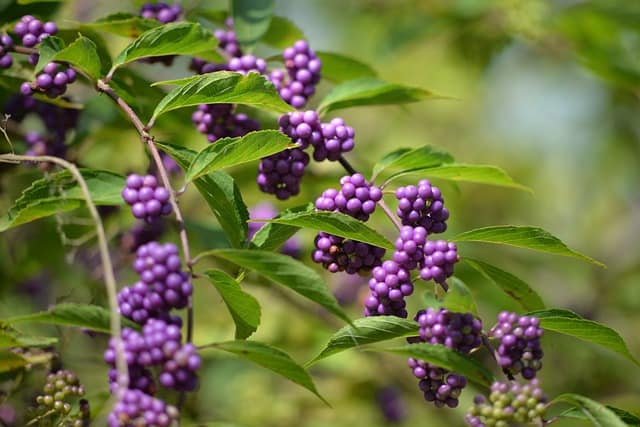
Barberry shrubs are perfect for gardeners seeking low-maintenance deer resistant options. These thorny beauties are most commonly known for their vibrant foliage that ranges from deep burgundy to bright yellow depending on the species, thriving best in sunny locations. The thorny nature of the Barberry makes it less appealing to deer, while also providing an effective natural barrier in hedges or borders.
They produce small flowers that bloom in the spring, often followed by berries that birds adore. These berries add a pop of color to the landscape while ensuring they’re a hit with wildlife, minus those pesky deer. Barberry has seen a rise in popularity due to its versatility; it can be shaped through pruning to fit various garden aesthetics, from modern minimalism to rustic charm.
Beautybush (Kolwitzia amabilis)
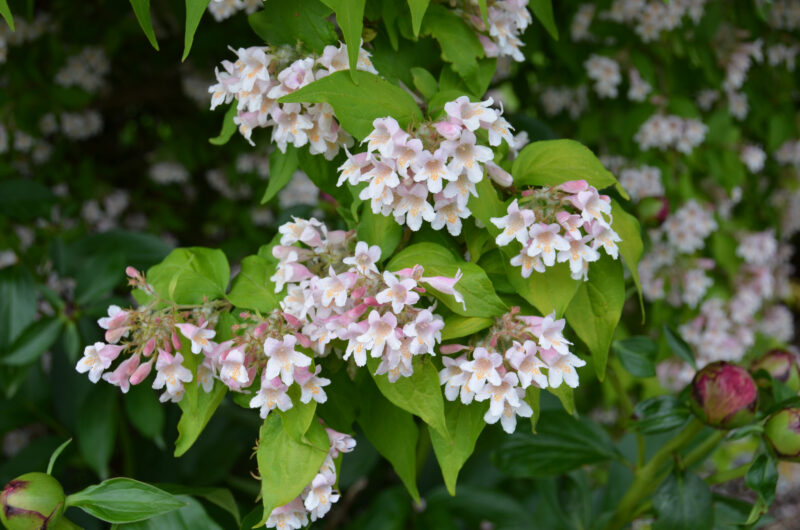
Beautybush lives up to its name, showcasing graceful arching branches covered in clusters of pink, trumpet-shaped flowers in spring. Native to China, this lovely shrub flourishes in well-drained soil and enjoys full sun to partial shade. Within its wide canopy, deer tend to shy away due to its somewhat coarse texture and slightly bitter taste.
The Beautybush also has a lovely green foliage that turns a subtle gold in the autumn months, providing multi-season interest. It usually reaches a height of about 6 to 10 feet, making it fantastic for borders or as a standalone feature shrub. As it matures, it creates a naturally rounded shape that requires minimal maintenance, allowing any gardener to enjoy its beauty without the worries of pruning or training.
Bluebeard (Caryopteris spp.)

Bluebeard is a charming shrub that absolutely deserves a place in any deer-resistant garden design. Known for its vibrant blue flowers that mimic the hue of the summer sky, this plant blooms late in the season, adding a stroke of color when many other plants begin to fade. Its aromatic foliage is another deterrent to deer, while also attracting bees and butterflies eager for nectar.
Bluebeard thrives best in sunny locations, and while it does enjoy a bit of good soil, it adapts well to poorer conditions too. As a compact plant, it typically reaches a height of 3 to 4 feet, making it perfect for small gardens or perennial borders. With the ability to withstand drought and attract pollinators, Bluebeard is both an ecological and aesthetic powerhouse in deer-resistant landscaping.
Butterfly Bush (Buddleia spp.)
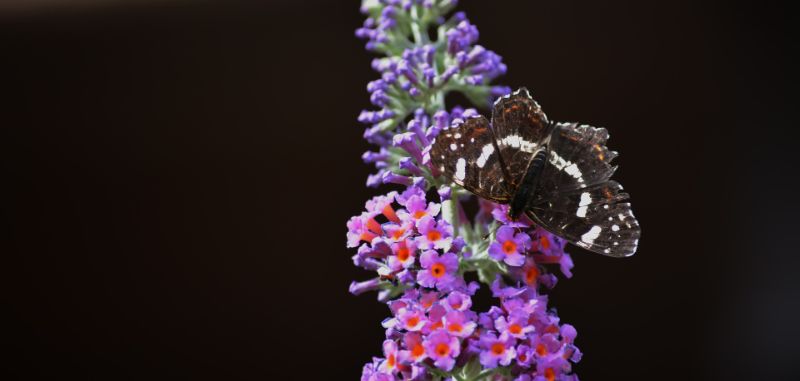
When it comes to attracting pollinators, few shrubs can overshadow the delightful Butterfly Bush. These magnificent plants produce long, cascading flower spikes in colors ranging from deep purple to bright pink and white. Their pleasant fragrances not only appeal to butterflies and hummingbirds but also serve as a deterrent for deer—making this shrub a favorite among wildlife enthusiasts.
Butterfly Bushes thrive in full sun and prefer well-drained soils but can adapt to various conditions, making them incredibly versatile. They can grow quite tall, often exceeding 6 feet, so they serve beautifully as focal points in gardens or as privacy screens. Regular pruning encourages healthy growth and enhances blooming, allowing gardeners to maintain their desired height and shape.
Daphne (Daphne spp.)
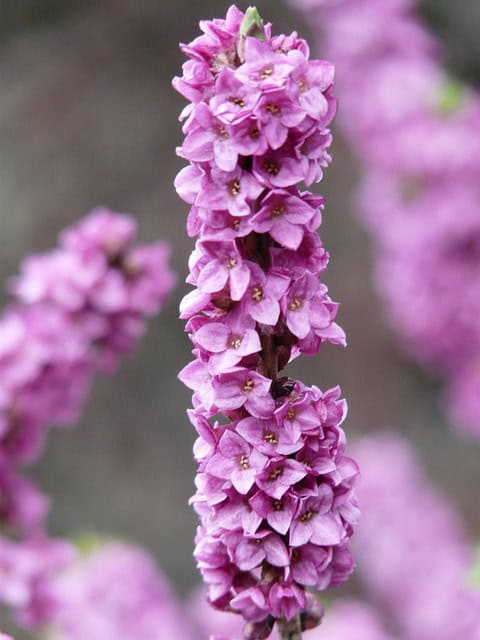
If you crave fragrant flowers, turn to Daphne shrubs, revered for their intoxicating aromas. Their blossoms, which can be white, pink, or purple, often appear before leaves in late winter to early spring, providing a burst of color when you least expect it. Deer generally avoid Daphne due to its toxicity, allowing this plant to thrive amidst grazing.
Daphne prefers well-draining soil and partial shade for optimal growth but can still tolerate sunlight. These relatively slow growers are compact, generally reaching heights of 2 to 4 feet, making them well-suited for smaller gardens, rock gardens, or as foundation plants near entryways. With a bit of patience and care, the fragrant blossoms and glossy green foliage of Daphne will reward you for years to come.
Deutzia (Deutzia spp.)
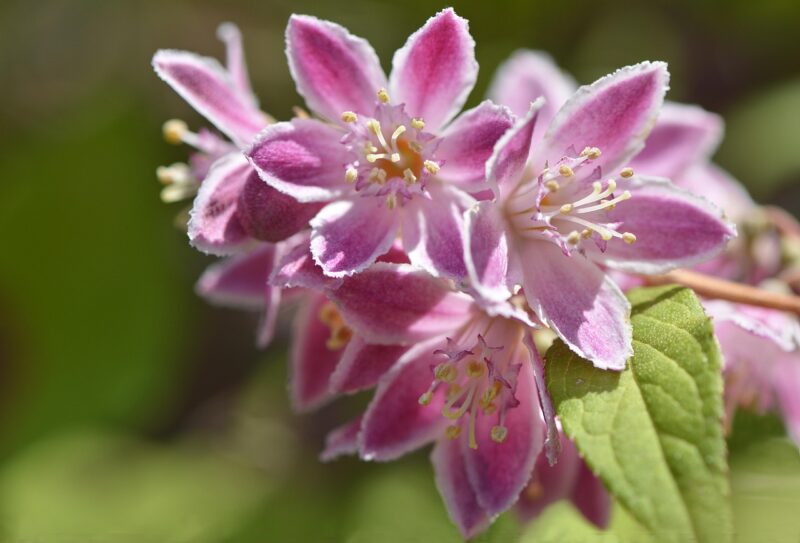
Deutzia is a versatile flowering shrub that thrives in a range of conditions, making it a favorite for gardeners looking for dependable deer resistance. This shrub typically blooms in late spring, displaying clusters of white or pink flowers that add a delicate touch to any landscape. Its adaptability includes a willingness to stand up to deer and drought once established.
Deutzia comes in various sizes and forms—from compact varieties perfect for borders to more sprawling types suited for hedges. With a performance that is nearly foolproof, all it requires is a well-drained site and some sunlight. Furthermore, the green foliage changes to vibrant yellow or red in the fall, which only enhances its seasonal presence in your garden.
Elderberry (Sambucus spp.)
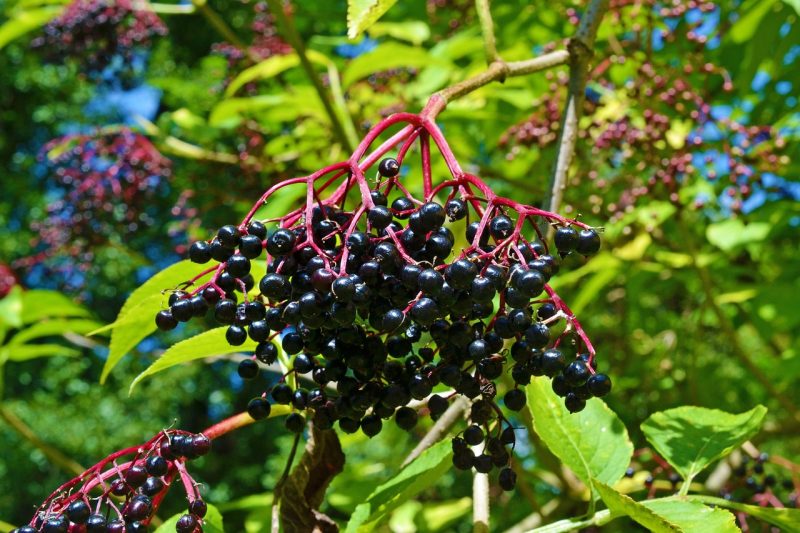
Elderberry is renowned not only for its beautiful, aromatic flowers but also for its delicious berries. These deer resistant shrubs bloom in late spring to early summer, presenting clusters of creamy white flowers that are a hit with pollinators and can be used in making wines and syrups. While the berries need to be cooked before consumption, they are a nutritional powerhouse, attracting birds and ensuring wildlife diversity.
Elderberries thrive in moist, well-drained soils but are also tolerant of drought once established. With sizes ranging from 5 to 12 feet tall, these shrubs are versatile, working well as background plantings or even natural hedges. Their bright green foliage provides a lush backdrop, while the fall color can provide a stunning display when the leaves turn to yellow or deep red.
Forsythia (Forsythia spp.)
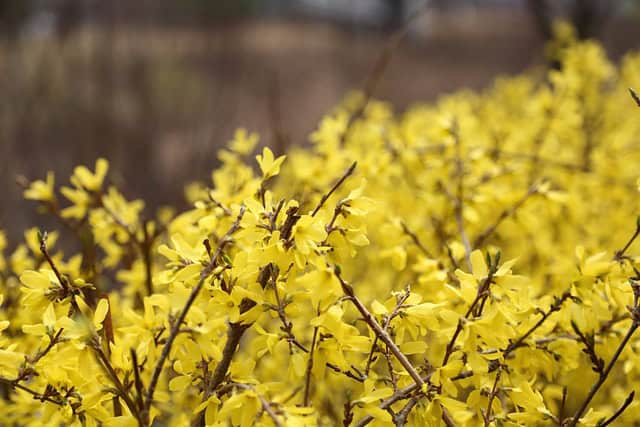
The cheery forsythia is unmistakable in early spring, as it bursts forth in a dazzling display of bright yellow flowers. Generally, deer shy away from this hardy shrub, allowing others to enjoy its sunny disposition. Forsythia thrives in full sun and prefers well-drained, fertile soil to keep growing strong.
This fast-growing shrub can reach up to 10 feet tall, making it an excellent choice for hedges, borders, or even as a show-stopping standalone accent. Trimming the plant after blooming helps control its size while promoting new growth, ensuring your garden remains fresh year after year. Plus, as the season progresses, its green leaves provide a beautiful contrast against the spring blooms.
Holly (Ilex spp.)
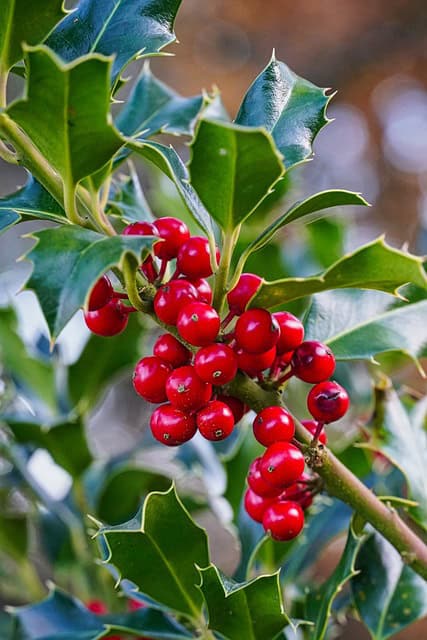
Holly is a classic garden staple famous for its vibrant red berries and glossy green foliage, particularly popular during the holiday season. What makes holly particularly appealing to gardeners is its deer resistance; the thorny foliage can deter even the hungriest of grazers.
Hollies can vary in size and shape, offering a selection of formality for your garden design. They thrive in full sun to part shade, developing stunning berries only on the female plants, which require a male pollinator nearby to set fruit. Their gorgeous red berries provide winter interest and food for birds. Additionally, holly can be easily pruned to shape, making it a versatile choice for formal gardens.
Japanese Pieris (Pieris japonica)

Japanese Pieris is a compact beauty, often valued for its stunning clusters of bell-shaped flowers and attractive evergreen foliage. Blooming in early spring, the delicate white or pink flowers create a lovely display that delights gardeners and passersby alike. Deer typically avoid this shrub due to its unpalatable nature.
Preferably planted in acidic, well-drained soil, Japanese Pieris flourishes in both full sun and partial shade. It usually grows to about 3 to 6 feet tall, making it ideal for foundation plantings or mixed borders. Its beautiful foliage holds its own all year, with vibrant new growth emerging in shades of red, adding further color to the landscape.
Lilac (Syringa spp.)
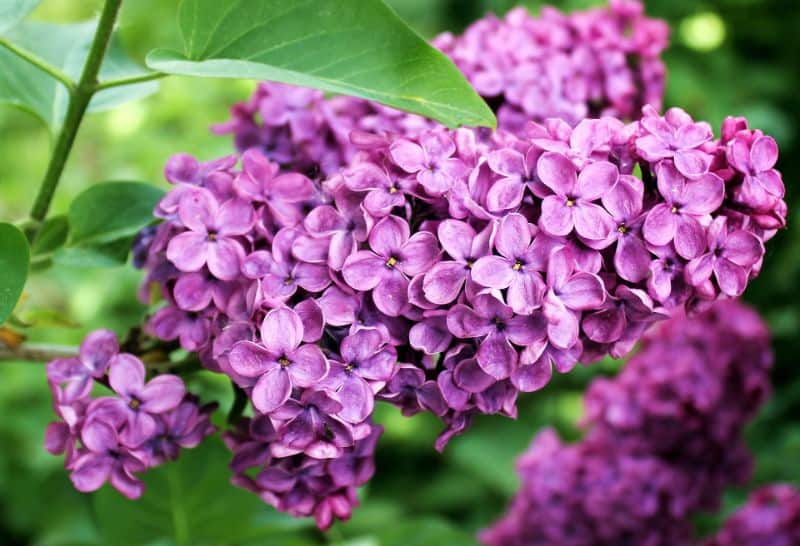
Lilacs are beloved for their intoxicating fragrance and showy flower clusters that bloom in early to mid-spring. Ranging in colors from white, pink, to deep purple, their blooms often signify the arrival of warmer weather. Deer generally do not favor Lilac, making them a go-to for concerned gardeners.
Lilacs require full sun and well-drained soil to thrive; they do best when planted in a location with plenty of air circulation. Typically growing between 4 to 10 feet high, they offer a wealth of form and variety, from standard upright types to compact versions suitable for smaller spaces. The well-established plants can be pruned to maintain desired shapes while enhancing blooms and growth.
Mahonia (Mahonia spp.)

Mahonia, also known as Oregon grape, is a unique evergreen shrub that brings beauty and interest throughout the seasons. It bears vibrant yellow flowers in late winter to early spring, which develop into deep blue berries that birds enjoy later in the year. Deers tend to avoid Mahonia due to its spiky leaves; hence, it’s well-suited for less than idyllic areas where deer may roam.
Mahonia thrives in shady or partially shaded areas, preferring acidic soils. Its height can range from 2 to 6 feet, allowing it to fit into both small and large garden designs. Beyond its usability as a deer-resistant option, Mahonia also works beautifully as a privacy screen or backdrop in shaded areas, ensuring vibrant colors even where other plants may falter.
Mountain Laurel (Kalmia latifolia)
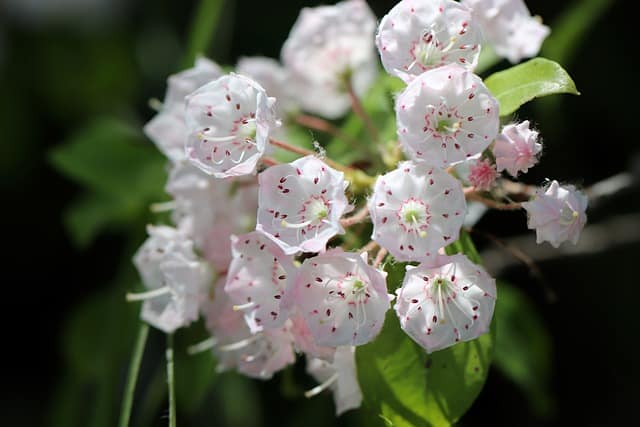
Mountain Laurel is an enchanting shrub native to North America’s eastern regions, adorned with clusters of star-shaped flowers in shades ranging from pink to white. Deer tend to avoid this plant due to its toxicity, making it a wise choice for gardens in areas with high deer populations.
This evergreen shrub flourishes in well-drained, acidic soils and can thrive in partial shade. Mountain Laurel grows up to 10 feet tall. Its shiny green leaves provide visual appeal year-round, while flowering adds delightful charm during late spring. Planting Mountain Laurel can bring a touch of woodland beauty to your garden, transporting you to a more natural setting.
Potentilla (Potentilla spp.)

Potentilla, or cinquefoil, is an underappreciated gem among flowering shrubs. These hardy plants exhibit bright yellow, white, or pink flowers throughout the summer months, adding sunny radiance to any garden. Their unappealing taste to deer makes them a favorite when deer invasions are prevalent.
Potentilla enjoys well-drained soils in full sun and can adapt to varying growing conditions, including drought, making them a low-maintenance choice. Typically maturing between 2 to 5 feet tall, they can perform well in mixed borders or as conversational conversation pieces in garden beds. Their cumulative blooming period ensures that your garden remains vibrant for months.
Rose of Sharon (Hibiscus syriacus)
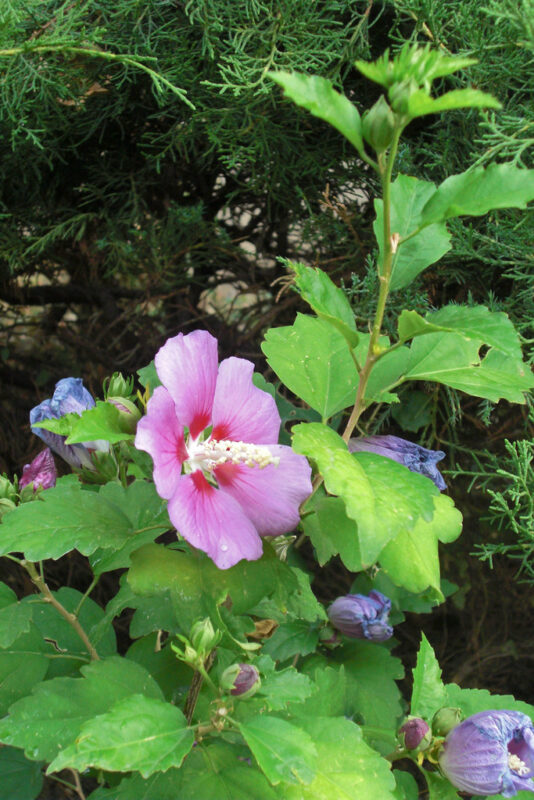
Rose of Sharon is a deciduous shrub that thrives in the late summer, featuring large, showy flowers in a range of colors including white, pink, and blue. Deer are generally not attracted to these blooms, allowing them to flourish undisturbed in deer-prone areas.
This adaptable shrub prefers full sun to partial shade and can tolerate very poor soils once established. The height of the Rose of Sharon can reach 8 to 12 feet, offering versatility in how it’s used—flanking pathways, serving as hedges, or standing alone as a focal point. Its long blooming period ensures it remains a standout in any garden, and its hardiness makes it easy to care for, even for novice gardeners.
Spirea (Spiraea spp.)

Spirea is a delightful option for those seeking deer resistant blooming shrubs. This versatile plant offers a dazzling array of flowers from late spring to early summer, displaying clusters in colors that range from white to pink. The spring blooms will attract pollinators while repelling deer due to their unpalatable nature.
Spirea thrives in well-drained soils and grows best in full sun, quickly taking shape into a sprawling bush or compact mound, depending on the variety. They typically grow between 2 to 6 feet in height, making them excellent for borders or mass plantings. The summer foliage transforms into brilliant autumn color, ensuring that Spirea brings interest to your garden well beyond the flowering season.
Viburnum (Viburnum spp.)
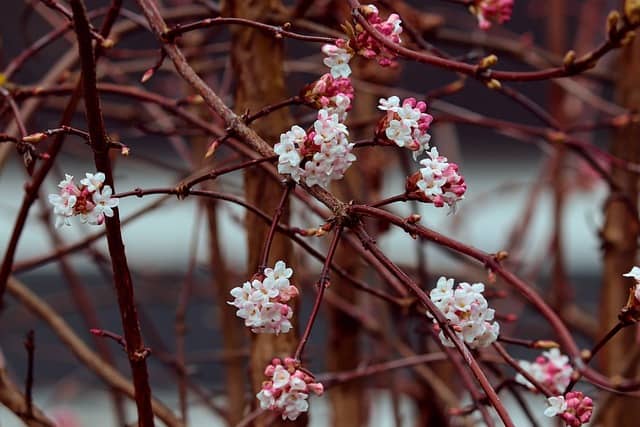
Viburnum offers an enticing selection of flowering shrubs perfect for any landscape design. Known for their clusters of white or pink, fragrant flowers that bloom in the spring and early summer, these shrubs have a long harmonious relationship with many wildlife species while being mostly ignored by deer.
Viburnum is quite adaptable; they thrive in varying soil types and light conditions. Ranging from 3 to 12 feet tall, these shrubs offer various sizes and structures, making them an excellent choice for mixed borders, hedges, or mass plantings. Planted strategically, Viburnum can create beautiful focal points while providing both aesthetic appeal and resistance against deer grazing.
Weigela (Weigela spp.)
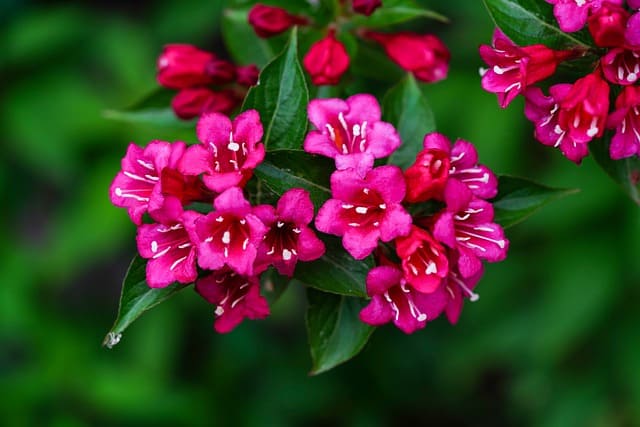
Weigela is a classic choice that offers stunning displays of bell-shaped flowers in an array of colors, including pink, red, and white. This deciduous shrub blooms in late spring and early summer, and deer are generally not interested in its floral offerings, allowing it to shine in your garden.
These shrubs are best planted in full sun, though they can benefit from some afternoon shade. Weigela generally grows between 3 to 6 feet tall, making it adaptable for various landscape designs, including foundation plantings or mixed borders. With a simple pruning routine, gardeners can keep this attractive shrub blooming year after year while enjoying its vibrant foliage and memorable blooms.





